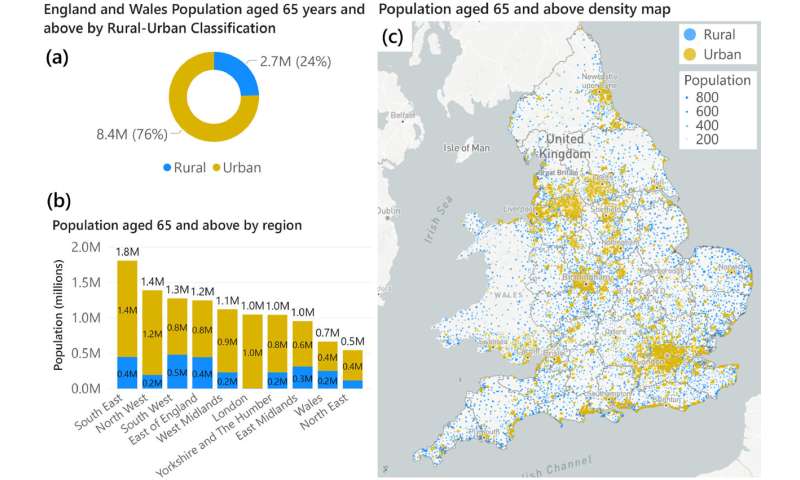Researchers challenge focus on rural older adults in latest health report by England's Chief Medical Officer

New analysis challenges prevailing assumptions about the distribution of older adults in Chief Medical Officer (CMO) Chris Whitty's latest annual report.
In a report published in the journal Clinical Medicine, researchers from the Centre for Ageing Resilience in a Changing Environment (CARICE) show that contrary to that suggested in Chris Whitty's latest annual Chief Medical Officer (CMO) report for England, most older adults live in urban areas rather than rural areas.
Using data from the 2021 census, the team analyzed self-reported health as a measure of need for services, providing a more complex picture of aging demographics. This suggested that the CMO annual report for England provided an incomplete and skewed picture of the geography of older people in England and a better understanding would be needed when planning health care services and resource allocation.
"Chris Whitty's latest report as Chief Medical Officer highlights the importance of understanding the geography of aging in England. However, it's crucial to consider both absolute and relative population metrics for a comprehensive view," said Nathan Cheetham, Senior Postdoctoral Data Scientist.
Census 2021 data indicates that approximately three-quarters of older adults in England and Wales, equivalent to 8.4 million individuals, live in urban regions. This challenges the emphasis placed on rural and coastal areas in the CMO report.
Projected population growth further complicates assumptions about urban-rural dynamics. Rather than shrinking, urban areas are projected to experience significant growth in older populations over the next two decades, with a projected increase of 43% compared to 48% in rural areas by 2043.
The analysis suggests that policymakers need to consider both absolute and relative demographic trends as well as making use of direct measures of health when planning how health care services for older adults are distributed geographically in England.
"We need to move beyond simplistic rural-urban dichotomies when planning health care services. The absolute numbers and health needs of older adults in urban areas demand attention. This is particularly important as we experience more climate change-related heat waves which most affect urban hotspots. Older people living in such places are mostly vulnerable group," added Professor Claire Steves, Group Lead, CARICE.
Disparities in health outcomes underscore the need for subtle policy responses, urban-dwelling older adults are not only more numerous but also more likely to reside in deprived neighborhoods and report poorer health compared to their rural counterparts.
Investing in preventive measures and understanding the diverse needs of older adults across different geographical areas is imperative for ensuring equitable health care provision.
As policymakers navigate the evolving landscape of aging demographics, a comprehensive approach considering both absolute numbers and health indicators is vital for effectively addressing the health care needs of older adults in England.
More information:
Nathan J. Cheetham et al, An undue emphasis on rural older adults in the Chief Medical Officer's annual report 2023?, Clinical Medicine (2024). DOI: 10.1016/j.clinme.2024.100204
Provided by King's College London